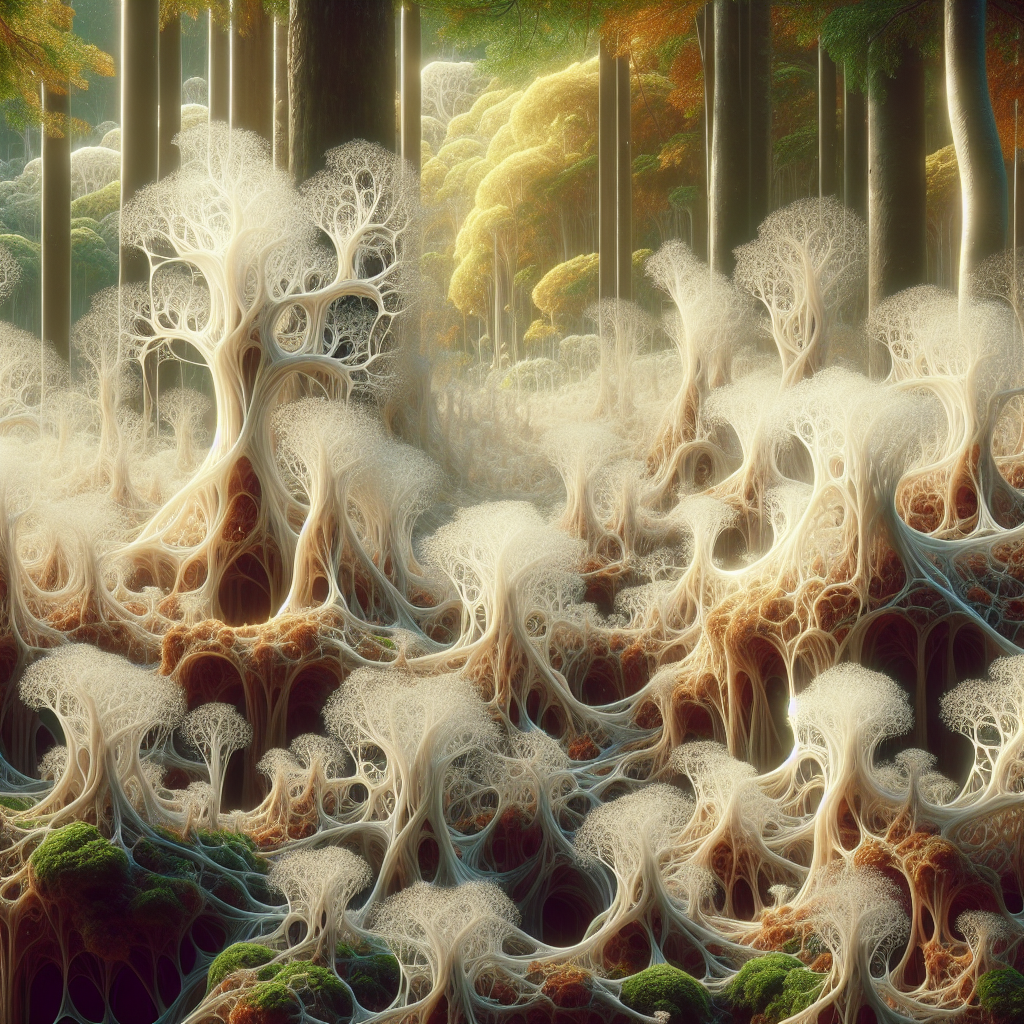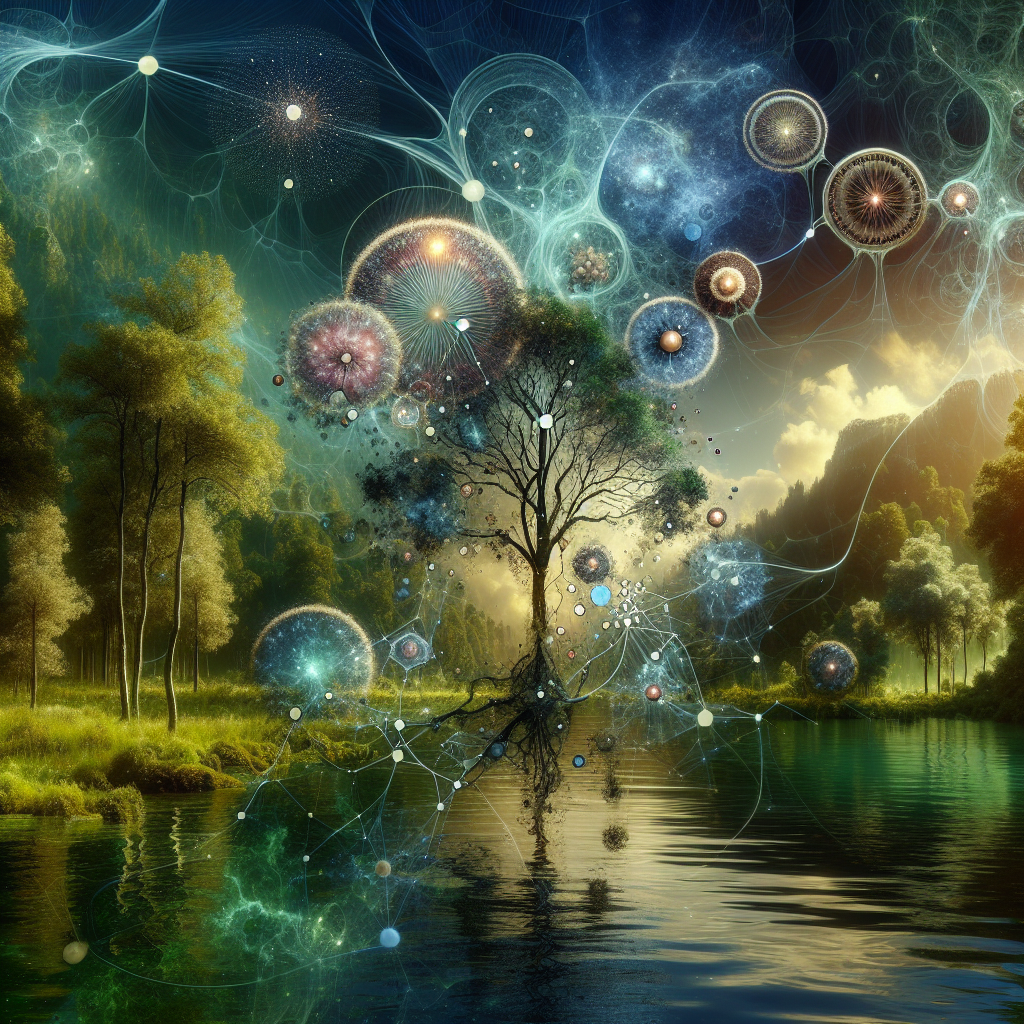The Magical World of mycelium mushrooms is a journey into the fascinating realm of microscopic fungi networks that play a vital role in the natural world. In this engaging exploration, you will uncover the extraordinary properties of mycelium mushrooms, shedding light on the critical role they play in supporting ecosystems, their remarkable resilience, and the diverse applications that have potential to revolutionize industries, from food to construction.

Understanding Mycelium Mushrooms
Mycelium mushrooms represent a fascinating realm within the kingdom of fungi. This ecosystem, invisible to the naked eye, forms an intricate network of thin hyphae threads beneath the soil surface. Composed of mycelia, the mushrooms we observe above ground are merely the fruiting bodies of this complex subterranean system.
What are Mycelium Mushrooms?
Scientifically known as mycelia, mycelium mushrooms refer to the vegetative part of a fungus, comprising a mass of branching hyphal threads. Every mushroom you see above ground is associated with an often extensive mycelial network underneath, truly a reflection of the proverbial tip of the iceberg analogy.
Different types of Mycelium Mushrooms
A diverse range of mycelium mushrooms exists in nature, encompassing many species across different fungal genera. Notable types include the Psilocybe genus, recognized for their hallucinogenic properties, Agaricus, which houses varieties like the common button mushroom and the portobello, and Amanita, known for its toxic species such as the deadly death cap mushroom.
The Biological Structure of Mycelium Mushrooms
The mycelium structure is a complex and dynamic entity. Consisting of a web-like network of hyphae (thin threads), the mycelium provides the necessary structure and nutrient acquisition mechanisms for the mushroom to flourish. Each hypha expands its vicinity by growth and branching, resulting in a massive mycelial network that can extend over vast areas.
Life Cycle of Mycelium Mushrooms
Mycelium mushrooms display a unique and intricate lifecycle, where the mycelium plays a crucial role.
Spore Germination
The process begins with spore germination. Spores, produced by the fruiting bodies, are dispersed by wind or other vectors and eventually land on a suitable substrate where they germinate, giving rise to the primary mycelium.
Hyphae Development
The primary mycelium then grows and forms hyphae, the filamentous structures that constitute the mycelium. Hyphae grow by extending their tips while new hyphae are produced by branching.
Mycelium Formation
A dense network of hyphae forms the mycelium. The mycelium, being the vegetative part of the fungus, absorbs nutrients from the substrate, facilitating growth and ultimately, the formation of a new mushroom.
Mushroom Formation and Spore Release
When environmental conditions are favorable, the mycelium gives rise to a fruiting body known as a mushroom. The mushroom produces spores, completing the life cycle.
Mycelium Mushrooms and Their Environment
In nature, mycelium mushrooms interact diversely with their environment, playing essential roles in ecosystems and contributing significantly to soil health.
The Ecological Role of Mycelium Mushrooms
Mycelium mushrooms fulfill crucial ecological functions, including decomposition of organic materials and nutrient cycling. By decomposing dead organic matter, they return essential nutrients to the soil, facilitating nutrient cycling.
Mycelium Mushrooms and Soil Health
As decomposers, mycelium mushrooms contribute to soil health. They decompose complex organic materials into simpler forms, enriching the soil with nutrients and improving its structure.
Interactions with Plants and Other Organisms
Mushrooms engage in symbiotic relationships with plants and other organisms. For instance, many form mutualistic associations known as mycorrhizae with plant roots, providing the plant with nutrients while receiving sugars in return.
The Fascinating Characteristics of Mycelium
The mycelium possesses several fascinating characteristics that underscore its ecological significance.
The Size and Spread of Mycelial Networks
Mycelial networks can span vast areas, making them some of the largest living organisms on Earth. A single mycelium network in Oregon, US, covers almost four square miles.
Ability to Break Down Complex Materials
Mycelium mushrooms can decompose complex organic materials like wood and even pollutants. This unique attribute has potential applications in bioremediation.
Bioluminescence in Some Mycelium Species
Some mycelium mushroom species produce light in a phenomenon known as bioluminescence. This feature, though rare, is observed in species like the ghost fungus (Omphalotus nidiformis).

Mycelium Mushrooms in Human History
Mushrooms have a rich history, being used in various cultures for their nutritional, medicinal, and even spiritual properties.
Usage in Ancient Cultures
Ancient cultures recognized the value of mushrooms for their nutritional and medicinal benefits. In traditional Chinese medicine, several mushroom species have been used for centuries.
Mycelium Mushrooms in Folklore and Mythology
Throughout history, mushrooms have been a source of myth and folklore in various cultures, often associated with magic and mystery due to their sudden appearance and diverse forms.
Mushrooms in Medicine and Pharmacology
Historically, mushrooms have been used in medicine for their potential therapeutic benefits, with modern research continually exploring their potential in pharmacology.
Farming and Cultivation of Mycelium Mushrooms
Cultivating mycelium mushrooms involves creating the right environment, selecting proper spawn and substrate, and employing effective harvesting and preservation methods.
Establishing a Suitable Environment
The initial step in mushroom cultivation involves creating a suitable environment. This requires maintaining the optimal temperature, humidity, and light conditions required for the specific mushroom species.
Spawn and Substrate Selection
Spawn selection is crucial since it introduces the desired mushroom species into the cultivation setup. The selected substrate, whether it be wood chips, straw, or compost, must be suitable for the mushroom species and be properly sterilized to prevent contamination.
Harvesting and Preservation Techniques
Mushrooms are typically harvested when the caps are fully open. The mushrooms should be carefully picked to avoid damaging the mycelium network beneath. For preservation, methods include drying and canning.
Culinary Uses of Mycelium Mushrooms
In the culinary world, mushrooms are greatly revered for their distinct flavors and nutritional properties.
Popular Mushroom Varieties for Cooking
Common mushroom varieties used in cooking include white button, portobello, shiitake, and oyster mushrooms. Each brings a unique texture and flavor to dishes.
Nutritional Profile of Mycelium Mushrooms
Mycelium mushrooms are a rich source of vitamins, minerals, and antioxidants, while being low in calories and fat. They also provide dietary fiber and a good source of protein.
Innovative Mushroom-Based Recipes
Mushrooms are utilized in countless ways in cooking. They can be used in a variety of dishes including soups, salads, main courses, and even desserts. Recently, plant-based diets have led to the innovative use of mushrooms as meat substitutes.
Medical and Therapeutic Benefits of Mycelium Mushrooms
Mycelium mushrooms have been known to possess several medical and therapeutic benefits.
Mushrooms in Traditional Medicine
In traditional medicine, especially in Asian cultures, different mushroom species have been used to treat a variety of illnesses, from common colds to more severe ailments.
Modern Research on Mushroom Supplements
Recent research focuses on potential benefits of mushroom supplements. Studies have suggested potential benefits of various mushroom extracts in boosting immune function, combating cancer and promoting heart health.
Potential Risks and Side Effects
However, it’s essential to note that while mycelium mushrooms have potential benefits, they can also have side effects and risks, especially when consumed in large amounts or for certain individuals with specific health conditions.
Mycelium Mushrooms in Biotechnology
Mycelium mushrooms hold promise in various aspects of biotechnology, including waste management and the development of new materials.
Use in Waste Management and Bioremediation
By breaking down complex organic materials, mycelium has potential applications in waste management and bioremediation. For example, it can help decompose organic waste materials and even break down pollutants.
Development of Mycelium-Based Materials
Research is ongoing into the development of mycelium-based materials. These include biodegradable packaging, insulation and even ‘mushroom leather’.”
Future Prospects in Mycelium Research
The prospects for mycelium in biotechnological applications are exciting. From more efficient biofuels to disease-resistant crops, the potential applications are vast and research in this topic continues to expand.
Sustainability and Ecological Implications
Mycelium mushrooms play an important role in sustainability and possess significant ecological implications.
Mycelium Mushrooms and Carbon Sequestration
Mycelium mushrooms contribute to carbon sequestration, helping mitigate climate change by absorbing carbon dioxide and storing carbon in soil.
Restoration of Damaged Ecosystems
Mycelium can help restore damaged ecosystems by improving soil health and promoting plant growth.
Protecting and Conserving Wild Mushroom Species
Given their ecological importance, it’s crucial to protect and conserve wild mushroom species. This includes preserving their natural habitats and regulating wild mushroom foraging and trade.
In conclusion, mycelium mushrooms represent a crucial part of our natural world. Their role goes far beyond the production of edible and medicinal mushrooms, extending into areas such as ecosystem sustainability, biotechnology and culture. Ongoing research continues to reveal more fascinating knowledge about our magical world of mycelium mushrooms.
